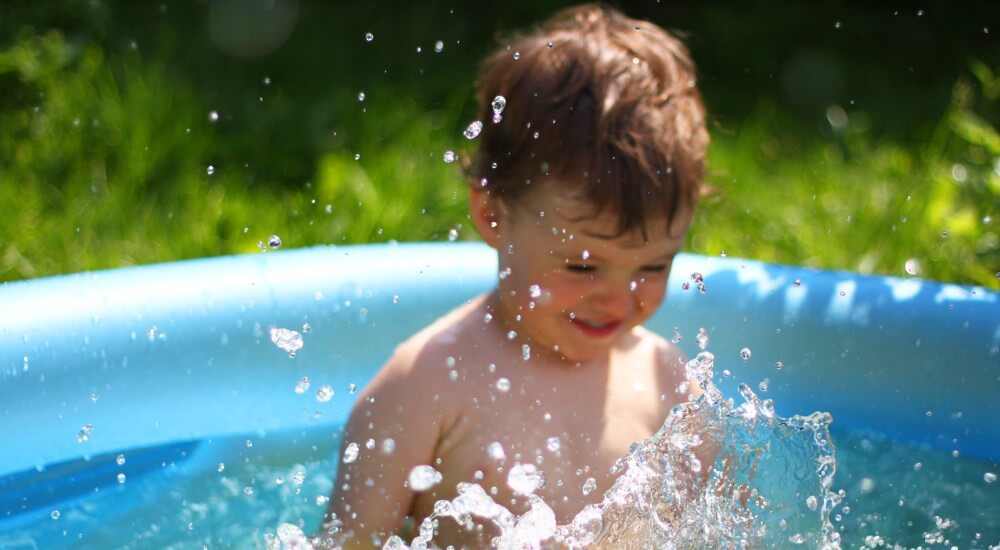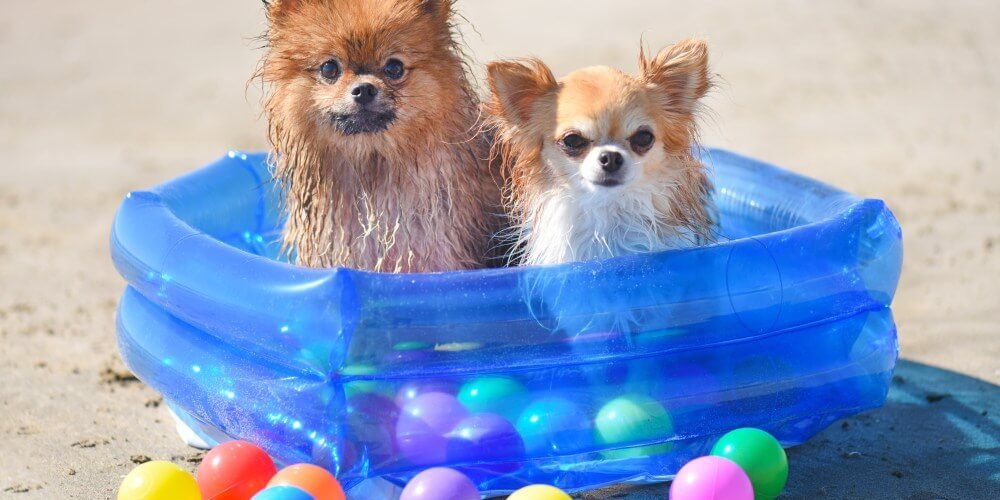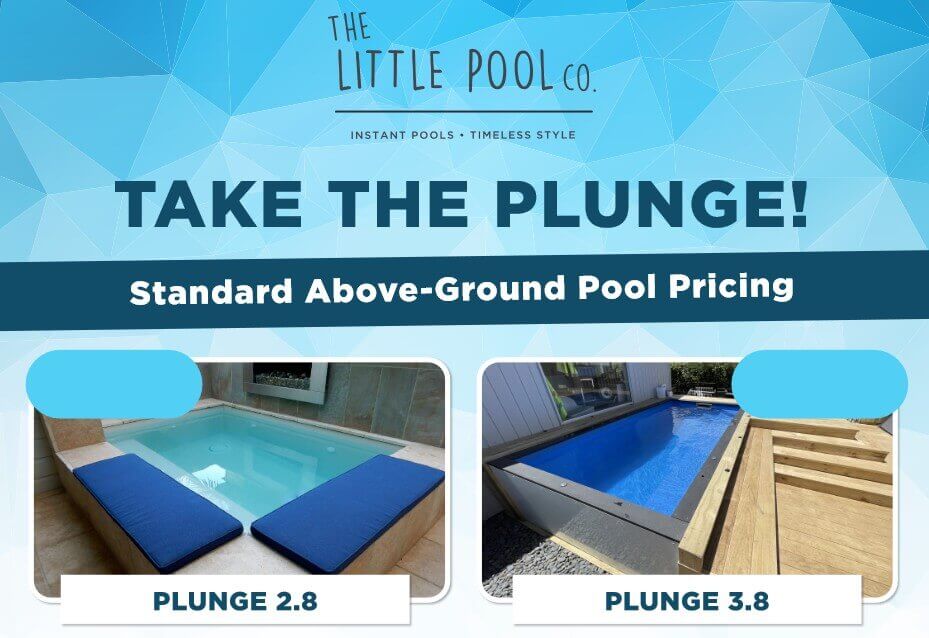Many of us dream of owning our own swimming pool in the backyard, but pools come with significant price tags. Some homeowners believe that having a pool is beyond their means, but this is not necessarily the case. Plastic swimming pools offer a highly affordable way of owning a pool – but are they good solutions? Will they be fit for purpose and offer value for money?
Here we discuss everything you need to know about plastic pools, from the advantages and disadvantages to costs, and even some alternatives you might want to consider.
What are plastic swimming pools?
When we think of plastic pools, most of us remember the inflatable paddling pools we had fun in as children. While these are still very much on the market, these days the plastic pool has grown into something big enough for adults, too, with sizes ranging up to approximately 4 metres x 2.11 metres. This is easily large enough for an adult to swim in, or several adults to relax in the water together.
There is a huge variety of different types of swimming pools made of plastic available. These start with basic inflatable pools, which are basically large versions of paddling pools. However, models become increasingly sophisticated as you work up the range, progressing to metal-framed plastic pools, and pools with frames made completely of metal or wood, covered with reinforced plastic. The pool walls are often made of steel, coated with a number of layers of plastic to give the pool extra strength and durability.
At the top of the plastic swimming pool range, you have vinyl pools. These are relatively high-quality above ground pools, with an exterior usually made from reinforced steel or aluminium, and a vinyl-liner insert which holds the water. Some vinyl pools can also be installed fully inground if you want a more permanent solution.
With so many different types of pools now available which all come under the category of plastic pools, it is essential to do your research thoroughly before deciding on the right pool to buy.
The advantages and disadvantages of plastic swimming pools

The main advantage of plastic pools is that they are extremely affordable, well within the budgets of most Australian households. They offer a cheap way to enjoy the benefits of your own swimming pool in your backyard, especially during the summer months, when they are an ideal way to cool off when the weather is hot.
Additionally, plastic swimming pools are highly convenient. Most are easy to set up, and come with everything you need, including a filtration pump. Your backyard does not need to be excavated, and you can put a plastic pool together yourself fairly quickly, so it offers an almost instant solution with no need for builders on your property. Due to their light weight and the fact that they sit on the ground rather than being built into your backyard, plastic pools are also highly portable, so you can take them with you easily if you ever move home.
However, there are a number of significant disadvantages to plastic pools. They are not particularly durable, so you do have to be careful with them, as even getting in or out of the pool carelessly can cause damage. The most vulnerable are completely plastic, inflatable pools, although even those with strong metal frames are unlikely to last more than a few summers.
Even vinyl pools, which can cost considerable amounts of money, are not renowned for their strength. Many come with repair kits in order to prolong their lives, are vinyl liners are prone to ripping and tearing. Even with moderate use, the liner will usually need to be replaced approximately every five to seven years, and this is not always cheap.
What does a plastic pool cost?
The category of plastic pools contains a wide variety of types of pools, all of which come with different price tags. Prices of plastic pools start extremely low, with inflatable pools available for as little as $150 – $300. Pools with more rigid structures, such as metal frames, retail on average for between $500 and $2,000, depending on the size and quality you choose. However, no matter which type of plastic pool you purchase, it is likely to need replacing within a few years unless you are extremely careful.
Vinyl pools tend to be built to higher standards, so they do cost more. These tend to start at around $10,000 for a decent model, but if you want it installed inground, you can pay as much as $25,000, and this is without factoring in the costs of maintenance and repairs.
Remember, plastic pools need to be kept clean, just like more expensive pools. An adult-sized pool needs a filtration system, so you need to allow for energy costs, and the price of pool cleaning chemicals to keep the water safe and hygienic. Getting the right chemical balance is absolutely critical in a plastic pool, as the surface can be damaged by having the wrong pH balance in the water.
Are plastic pools safe?

Because most plastic and vinyl pools are above ground, portable solutions, it can be easy to overlook safety legislation. If your pool is over 300mm deep, it must meet Australian Standard 1926, just the same as a permanent inground pool. This means the pool must be surrounded on all sides by a fence at least 1.2 metres high. All doors or gates in the fencing must be self-closing and self-latching.
In addition, a Non-Climbable Zone of at least 900mm needs to be observed around the outside of the pool fence. Within this area, there must not be any large objects such as furniture which children could stand on to climb over the fence.
Safety rules can differ depending on which state or territory you live in, so it is important to check with your local government authority to make sure your pool is compliant with the law.
Can a plastic or vinyl pool be used in winter?
This depends entirely on the climate where you live. As plastic pools are not particularly strong, they might not be able to withstand the weather conditions during the colder months. Most pools need to be closed up during the winter, and how you do this depends on the type of pool you have.
The Australian government recommends that small portable and inflatable pools are emptied when not in use, if this can be done safely and practically. If you have a larger plastic pool, it is advisable to reduce the water level to below the skimmer, as this will protect the plumbing from freezing. Your pool should also be covered to protect it from damage, and you will also need to add winterising chemicals in the right quantities to keep the pool clean, safe and ready for use when the weather gets warmer.
Are there any comparable alternatives to plastic pools?
You are unlikely to find a higher quality pool at as low a price as a plastic pool. However, if you are prepared to spend a little extra for a superior quality pool, Little Pools could be the solution you are looking for.
Little Pools are top quality fibreglass pools which are compact, portable and affordable. They have been designed in collaboration with one of Australia’s leading pool manufacturers, so they contain all the latest technology to make them extremely safe, strong and durable. A Little Pool is capable of withstanding all the extremities of the Australian climate, and will last for many years into the future.
As Little Pools are compact, they can easily be transported on trucks, so they can be delivered directly to your home and even taken with you if you move. They do not require any excavation work to install; all they need is a level surface, ideally a concrete pad, to sit on to ensure safety. Once they are in position, they just need to be connected to an electricity supply before they can be filled and used, so you can start enjoying your pool practically straight away. They come with everything you need, including a filtration system, steps and lighting, and can be a beautiful feature in your backyard, as there are a number of cladding options and pool colours to choose from.
Starting at $22,750, a Little Pool is the affordable way to enjoy a pool of outstanding quality in your backyard. They do not require the same level of maintenance as plastic pools, so over time, they are more cost effective, giving you many years of enjoyment with a relatively low price tag.
More information about different types of pools
If you would like to know more about Little Pools, the different options available, and how they compare to other types of swimming pools on the market, please contact us. Our specialist team will be happy to answer all your questions and help you make an informed purchase decision.








